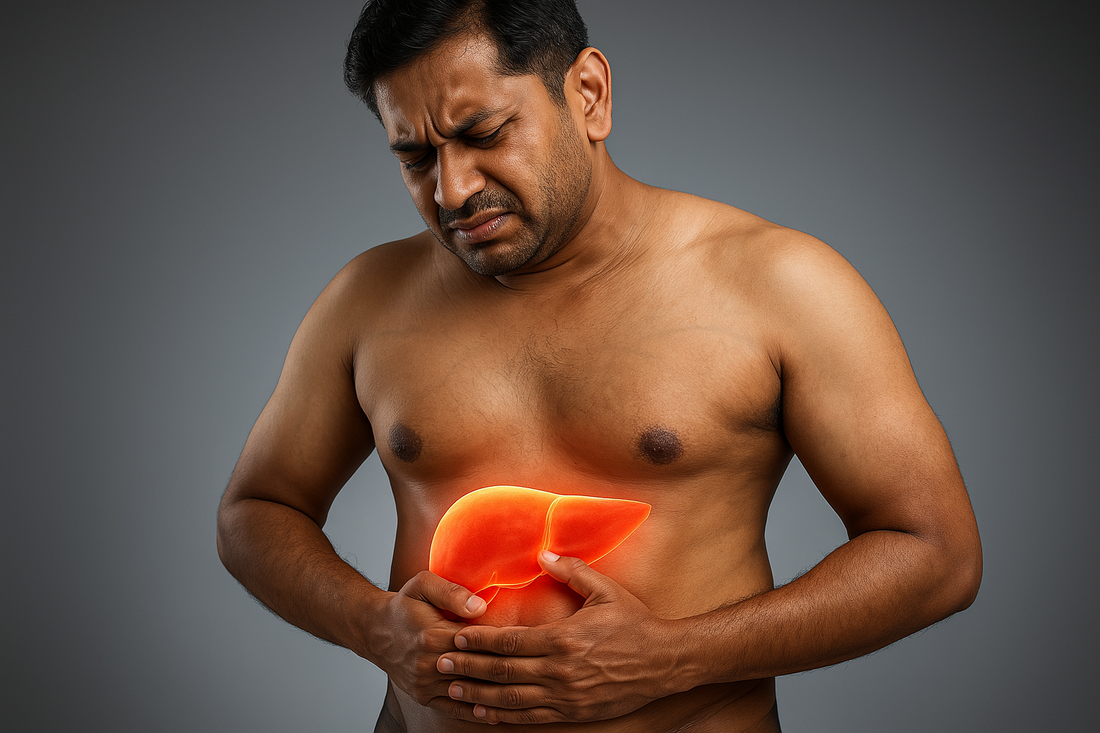
Understanding MASLD: The New Name for Fatty Liver Disease
Share
Metabolic dysfunction-associated steatotic liver disease (MASLD) is a new name for what was earlier called non-alcoholic fatty liver disease (NAFLD). It happens when fat builds up in the liver, even if you don't drink alcohol. MASLD is closely linked to lifestyle diseases like obesity, type 2 diabetes, high blood pressure, and high cholesterol.
The new name highlights that this condition is part of a larger issue—metabolic problems in the body—and not just about the liver alone.
Why Should You Care?
MASLD is a silent disease. Most people don’t have any symptoms, so they don’t even know they have it. But if it’s not treated, it can lead to liver inflammation, scarring (fibrosis), liver failure, or even liver cancer.
In India, the number of people with MASLD is rising fast, especially due to unhealthy eating habits, lack of physical activity, and increasing rates of obesity and diabetes. Studies show that up to 70% of people with diabetes also have MASLD.
Who is at Risk?
You may be at risk for MASLD if you:
- Are overweight or obese
- Have type 2 diabetes or prediabetes
- Have high blood pressure or high cholesterol
- Have a large waist size (more than 90 cm in men or 80 cm in women)
- Have a family history of liver disease
- Have conditions like PCOS, sleep apnea, or chronic kidney disease
Even people who appear slim can get MASLD if they have poor eating habits or a sedentary lifestyle.
How is MASLD Diagnosed?
Because MASLD often has no symptoms, it is usually found by chance during routine blood tests or scans. If your liver enzymes are higher than normal, your doctor may suspect MASLD.
To confirm it, your doctor may use:
- Ultrasound or FibroScan to check for fat and stiffness in the liver
- Blood tests like the FIB-4 score to check for liver damage
- In some cases, a liver biopsy if the condition is severe or unclear
What Can You Do About MASLD?
The good news is MASLD can be reversed if caught early. The most effective treatment starts with lifestyle changes.
Focus on Lifestyle Changes
1. Lose weight slowly and safely
Even a 5% weight loss can reduce liver fat. A 7–10% weight loss may improve inflammation and scarring in the liver.
2. Improve your diet
- Eat more fruits, vegetables, whole grains, and protein (especially plant-based)
- Cut down on sugar, fried food, junk food, and white carbs like white rice or bread
- Include healthy fats from nuts, seeds, and oils like olive oil
- Avoid sugary drinks, excessive salt, and processed snacks
3. Be more active
- Do at least 30 minutes of physical activity like walking, cycling, or swimming, 5 days a week
- Include strength training exercises 2 times a week to build muscle
- Avoid sitting for long hours—take small breaks to move around
Medicines for MASLD
Lifestyle is the first step. But if your condition doesn’t improve, doctors may consider medicines.
- Saroglitazar is approved in India for MASLD and early liver scarring
- Semaglutide (a diabetes drug) may also reduce liver fat and inflammation
- Statins are safe and help reduce heart disease risk, which is high in people with MASLD
- Other diabetes medications like metformin and SGLT2 inhibitors may help if you have diabetes too
Always follow your doctor’s advice before starting any medicine.
Regular Check-ups are Important
Once diagnosed, it’s important to monitor your liver health regularly. Your doctor may repeat blood tests or a FibroScan every 6–12 months. This helps in checking if the condition is improving or getting worse.
Final Thoughts
MASLD is a growing health problem in India, but it is not something you are helpless against. Simple changes in your daily routine—like eating healthier, moving more, and getting regular check-ups—can go a long way in protecting your liver.
If you have diabetes, obesity, or other risk factors, talk to your doctor about screening for MASLD. Early action can prevent serious liver damage in the future.
